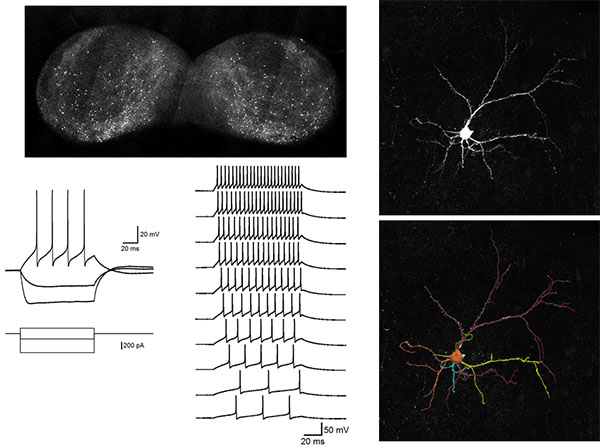The overall aim of the Roberts Laboratory is to establish a deep understanding of the cellular, synaptic and network mechanisms used by neural circuits in the auditory system to extract and encode important features of sounds.

The auditory system provides a number of distinct advantages for analyzing neural circuit function. First, the sensory input to the auditory system is well defined. Second, early computations are divided among highly specialized nuclei in the brainstem. These nuclei perform specific operations, such as determining the spatial source of sounds, that form the building blocks of higher-level auditory tasks like speech processing. Third, the outputs of these diverse brainstem circuits converge in the midbrain in the inferior colliculus (IC). This makes the IC an excellent system for examining how circuits manipulate and combine well-defined streams of information to generate higher order representations.
Our specific goal is to define the mechanistic underpinnings of computations performed by neural circuits in the IC. Powerful methods including in vitro and in vivo patch clamp electrophysiology, optogenetics, genetically engineered mice and viral transduction have opened exciting new avenues for circuit analysis. We are combining these approaches to address the following questions: What are the fundamental microcircuits of the IC and how do they function? How do microcircuits shape the receptive fields of IC neurons? How are IC microcircuits modified by hearing and communication disorders like tinnitus and autism, and how can these changes be reversed?


